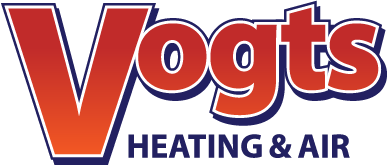
We spend lots of time indoors. In fact, the Environmental Protection Agency (EPA) has estimated being indoors makes up 90% of our time. However, the EPA also has determined your indoor air can be three to five times dirtier than outdoors.
That’s due to the fact our homes are securely sealed to enhance energy efficiency. While this is fantastic for your utility costs, it’s not so fantastic if you’re amid the 40% of the population with respiratory allergies.
When outdoors ventilation is insufficient, pollutants such as dust and volatile organic compounds (VOCs) can get trapped. As a consequence, these pollutants may worsen your allergies.
You can improve your indoor air quality with fresh air and usual dusting and vacuuming. But if you’re still having problems with symptoms during the time you’re at your residence, an air purifier might be able to provide assistance.
While it can’t eliminate pollutants that have settled on your furnishings or carpet, it may help purify the air circulating across your home.
And air purification has also been scientifically verified to help lower some allergic symptoms, according to the American College of Allergy, Asthma and Immunology. It can also be helpful if you or someone in your household has a lung condition, including emphysema or COPD.
There are two kinds, a portable air purifier or a whole-home air purifier. We’ll go over the advantages so you can figure out what’s appropriate for your home.
Whole-House Air Purifier vs. Portable Air Purifiers
A portable air purifier is for a lone room. A whole-house air purifier accompanies your home comfort unit to clean your entire house. Some kinds can purify on their own when your HVAC equipment isn’t on.
What’s the Best Air Purifier for Allergies?
Look for an option with a High Efficiency Particulate Air (HEPA) filter. HEPA filters are installed in hospitals and provide the most comprehensive filtration you can find, as they trap 99.97% of particles in the air.
HEPA filters are even more useful when installed with an ultraviolet (UV) germicidal light. This powerful combination can wipe out dust, dander, pollen and mold, all of which are common allergens. For the greatest in air purification, think over a unit that also has a carbon-based filter to decrease household vapors.
Avoid using an air purifier that makes ozone, which is the top ingredient in smog. The EPA warns ozone might irritate respiratory problems, even when released at low concentrations.
The Allergy and Asthma Foundation of America has created a checklist of questions to think over when getting an air purifier.
- What can this purifier remove from the air? What doesn’t it remove?
- What’s its clean air delivery rate? (A better figure means air will be cleaned faster.)
- How frequently does the filter or UV bulb need to be switched]? Can I complete that without help?
- How much do replacement filters or bulbs cost?
How to Decrease Seasonal Allergy Symptoms
Want to receive the {top|most excellent|best] outcome from your new air purification unit? The Mayo Clinic advises taking other measures to decrease your exposure to things that can trigger seasonal allergies.
- Stay indoors and keep windows and doors sealed when pollen counts are high.
- Have other household members cut the lawn or pull weeds, since these tasks can worsen symptoms. If you must do these jobs on your own, consider wearing a pollen mask. You should also bathe without delay and put on new clothes once you’re completed.
- Avoid drying laundry outside.
- Turn on your air conditioner while indoors or while in the car. Consider installing a high efficiency air filter in your residence’s HVAC system.
- Even out your house’s humidity percentage with a whole-house dehumidifier.
- Hardwood, tile or linoleum are the suggested flooring kinds for decreasing indoor allergens. If your home has carpet, add a HEPA filter on your vacuum cleaner.
Let Our Specialists Manage Your Indoor Air Quality Necessities
Ready to progress with installing a whole-house air purifier? Give our specialists a call at 208-621-0129 or contact us online to get an appointment. We’ll help you find the right equipment for your home and budget.
